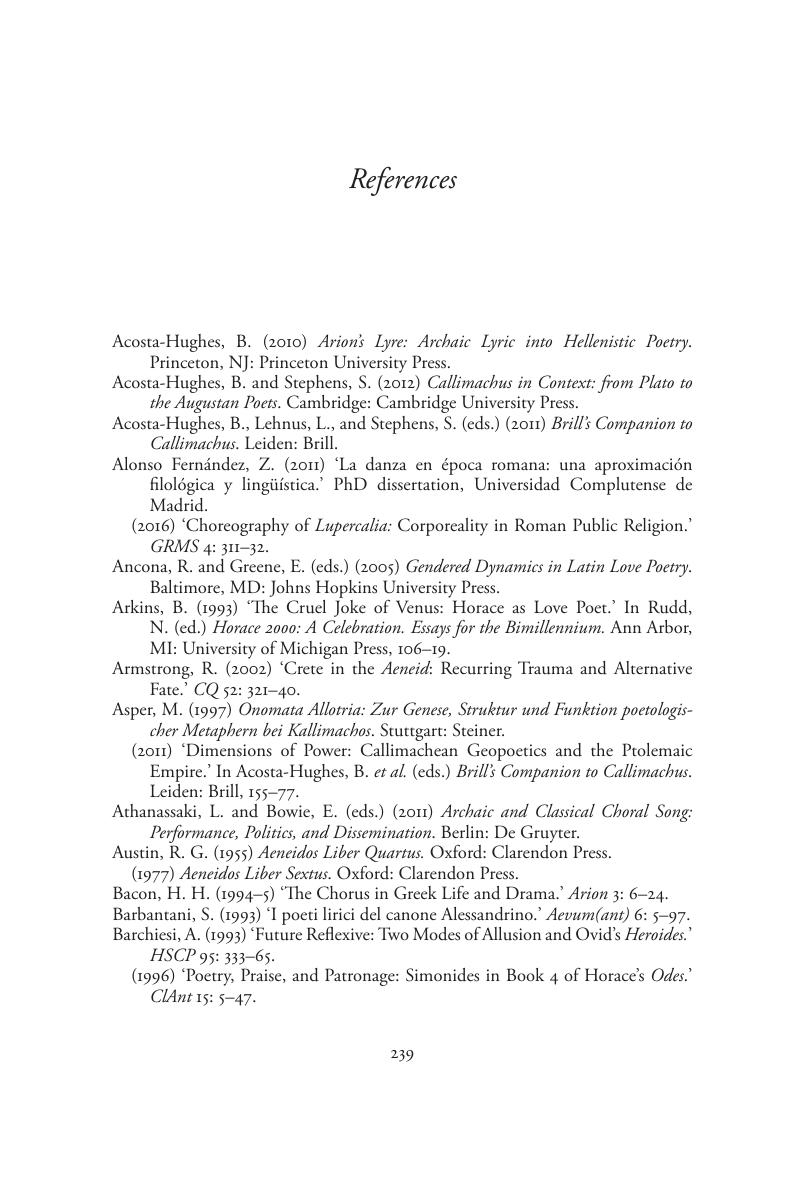Book contents
- Imagining the Chorus in Augustan Poetry
- Imagining the Chorus in Augustan Poetry
- Copyright page
- Dedication
- Contents
- Acknowledgements
- A Note on Ancient Texts and Translations
- Abbreviations
- Introduction
- Chapter 1 Imagined Choruses from Alexandria to Rome
- Chapter 2 Dance and Desire in Propertius’ Elegies
- Chapter 3 Horace and the Erotics of the Lyric Chorus
- Chapter 4 Canon, Community, and Chorus
- Chapter 5 Virgil’s Aeneid and the Relocation of Ritual
- Chapter 6 Foundational Choreography in the Aeneid
- Epilogue
- References
- Index Locorum
- General Index
- References
References
Published online by Cambridge University Press: 19 September 2017
- Imagining the Chorus in Augustan Poetry
- Imagining the Chorus in Augustan Poetry
- Copyright page
- Dedication
- Contents
- Acknowledgements
- A Note on Ancient Texts and Translations
- Abbreviations
- Introduction
- Chapter 1 Imagined Choruses from Alexandria to Rome
- Chapter 2 Dance and Desire in Propertius’ Elegies
- Chapter 3 Horace and the Erotics of the Lyric Chorus
- Chapter 4 Canon, Community, and Chorus
- Chapter 5 Virgil’s Aeneid and the Relocation of Ritual
- Chapter 6 Foundational Choreography in the Aeneid
- Epilogue
- References
- Index Locorum
- General Index
- References
Summary

- Type
- Chapter
- Information
- Imagining the Chorus in Augustan Poetry , pp. 235 - 238Publisher: Cambridge University PressPrint publication year: 2017



